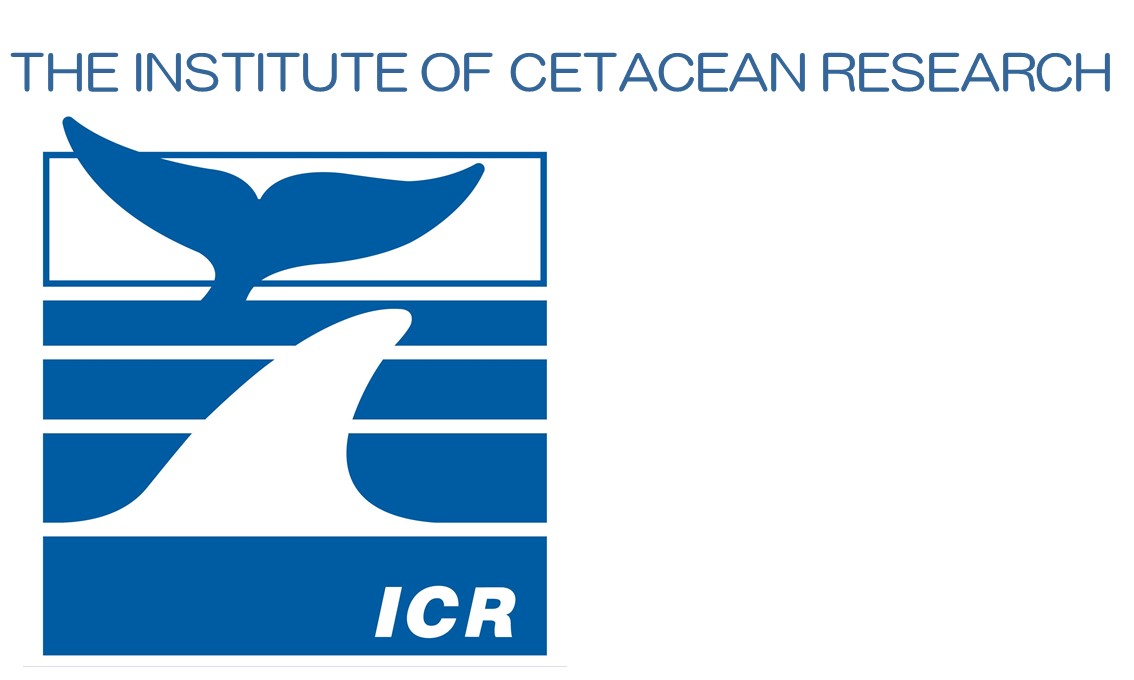Completion of the 2023 IWC/Japan Joint Cetacean Sighting Survey Cruise in the North Pacific
- IWC POWER
October 3, 2023
Designated Corporation for Scientific Whale Research
THE INSTITUTE OF CETACEAN RESEARCH
1. Background
This survey is conducted jointly by the International Whaling Commission (IWC) and Japan, and is commonly referred to as IWC-POWER (International Whaling Commission/Pacific Ocean Whale and Ecosystem Research). IWC-POWER is the successor of IWC/SOWER (International Whaling Commission Southern Ocean Whale and Ecosystem Research), a successful whale research program acclaimed globally, which was conducted in the Antarctic Ocean from 1996/1997 to 2009/2010. Taking advantage of the know-how, experience and achievements of IWC/SOWER, IWC-POWER has been carried out every summer since 2010 based on the main research plan of the IWC Scientific Committee.
For the past thirteen years, the IWC-POWER research cruises have been covering a wide area of the North Pacific that had not been surveyed for several decades, finding large numbers of fin and sei whales in the Gulf of Alaska area north of 40 degrees north latitude and a large number of Bryde's and sperm whales in waters south of 40 degrees N, and valuable data have been collected to contribute to objective stock assessment of these species. In addition, information on the distribution of rare species such as blue and right whales was also collected.
As the 14th cruise, this time the research was conducted in the waters south of the Alaska Peninsula and the Aleutian Islands (outside the U.S. exclusive economic zone: waters from north of 40 degrees north latitude and between 180 degrees east longitude and 155 degrees west longitude). The cruise was conducted from July 28 to October 5 with the participation of a total of four international researchers, two each from the United States and Japan. This area was also surveyed in 2010 and 2011, but this time collection on information on visual oversight rate, vocalization recording experiments and blue whale satellite tagging were conducted anew.
2. Outline of the 2023 Research Cruise and Summary of Results
The IWC-POWER program is conducted collaboratively by the IWC and the Government of Japan. The IWC Scientific Committee has developed the research program and established the IWC-POWER Steering Group (Convenor: Koji Matsuoka, Research Executive Director, ICR), which has a role of designing the research plan and analyzing the results of the cruises. The survey was commissioned by the Fisheries Agency of Japan, and conducted by the Institute in cooperation with the Tokyo University of Marine Science and Technology (TUMSAT), the National Oceanic and Atmospheric Administration/Alaska Fisheries Science Center (NOAA/AFSC), and other related organizations.
In the research area, many fin and sei whales were found, again suggesting the robustness of their stocks. In addition, nine blue whale groups were found, suggesting that the resource is recovering well, and the sighting of the rare North Pacific right whale provided opportunity to collect valuable data. The whales were photographed for identification, biopsy (skin and blubber) samples were collected for DNA analysis, and satellite tags were attached to the whales to record their migration and diving behavior. Detailed results of the research will be presented at the IWC/SC annual meeting and other international organizations (the results introduced here are preliminary figures).
2.1 Main objectives
(1) Collection of information for the in-depth stock assessment of sei whales, humpback whales and gray whales.
(2) Collection of information on the distribution and stock structure of the rare North Pacific right and blue whales.
(3) Collection of data on abundance and stock structure of other whale resources with insufficient resource information.
(4) Collection of basic information including oceanographic data (sea water temperature, marine debris, etc.) necessary for the development of the medium- to long-term plan of this research program.
2.2 Research Cruise Period
From July 28 to October 5, 2023 (70 days).
2.3 Research Area
Waters outside the U.S. exclusive economic zone from north of 40 degrees north latitude and between 180 degrees east longitude and 155 degrees west longitude (Fig. 1). The research vessel called at the port of Dutch Harbor, Alaska, to embark and disembark U.S. researchers and to load and unload survey materials.
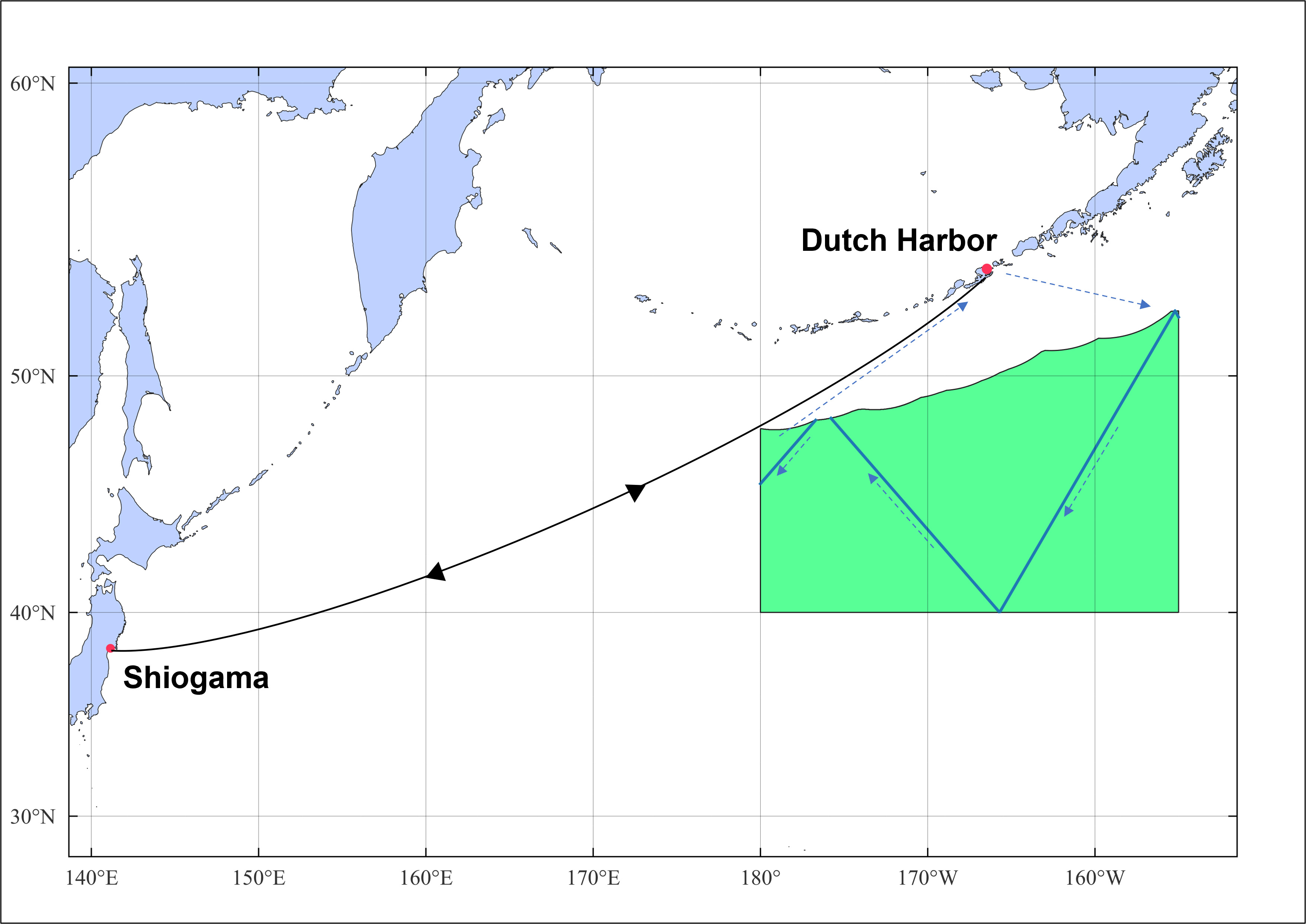
Figure 1. 2023 IWC-POWER survey area (green), and survey course (blue bold lines).
2.4 International Researchers
The survey was conducted by the following international researchers appointed by the IWC Scientific Committee.
Hiroto Murase (Cruise leader, IWC/POWER Steering Group, TUMSAT, Japan)
Jessica Crance (Alaska Fisheries Science Center, NOAA/AFSC, USA)
Bernardo Alps (Southwest Fisheries Science Center, NOAA/SWFSC, USA)
Isamu Yoshimura (IWC-nominated international researcher, Japan)
2.5 Research Vessel
Yushin-Maru No. 2 (Kyodo Senpaku, Ltd., 747 tons, Captain Chikamasa Ohkoshi, 16 crewmen).
2.6 Total Distance Covered
1,578 nautical miles (approximately 2,973km).
2.7 Main whale sightings
Right whale (4 groups, 5 animals), blue whale (9 groups, 9 animals), fin whale (115 groups, 192 animals), sei whale (63 groups, 82 animals), minke whale (2 groups, 2 animals), humpback whale (1 group, 1 animal), sperm whale (25 groups, 26 animals), killer whale (6 groups, 13 animals).
2.8 Results of sample collection and other experiments
(1) Photo identification data (number of individuals)
Right whale: 4 animals, blue whale: 7 animals, fin whale: 30 animals, sei whale: 9 animals.
(2) Collection of biopsy samples (number of individuals)
Blue whale: 4 animals, fin whale: 8 animals, sei whale: 7 animals.
(3) Whale vocalization recording (number of individuals)
We conducted 538 hours of acoustic monitoring at 143 stations and recorded the vocalization sounds of North Pacific right, blue, fin, sei, humpback, sperm, and killer whales.
(4) Satellite tagging (number of individuals)
Satellite tags were attached to 4 blue whales to elucidate their migration routes. Additionally, satellite tags were attached to 5 fin whales and 5 sei whales to clarify their diving behavior.
(5) Retrievable long-term sound recording buoy (dropped number)
At the request of the U.S. National Oceanic and Atmospheric Administration's Southwest Fisheries Science Center, we dropped two retrievable long-term sound recording buoys in the research area for the purpose of recording cetacean sounds.
(6) Marine debris (number observed)
We recorded 95 cases of marine debris in the research area.
Photographs from the 2023 IWC-POWER cruise
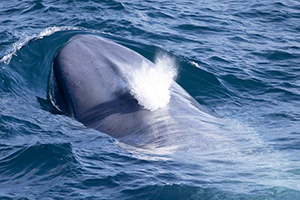 |
 |
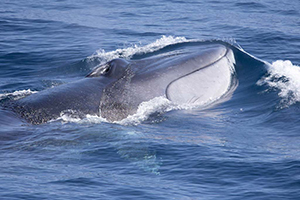 |
| Blue whale surfacing | A rare North Pacific right whale | Fin whale, the most frequently sighted species |
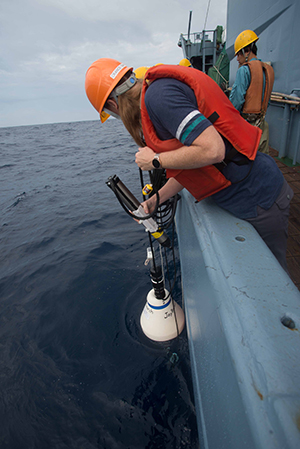 |
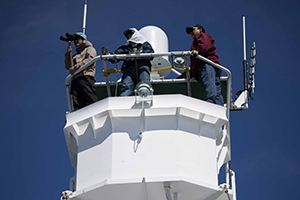 |
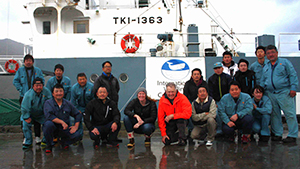 |
| Researcher dropping a retrievable long-term sound recording buoy | Observers confirming whale species from the top barrel | International researchers and crew pose in front of the Yushin Maru No. 2 at Dutch Harbor |
Completion of the 2023 IWC/Japan Joint Cetacean Sighting Survey Cruise in the North Pacific - IWC-POWER (PDF file)
